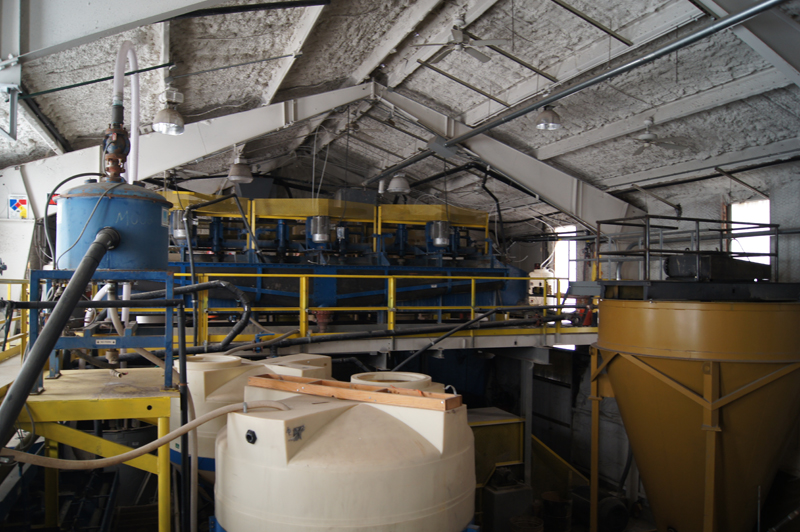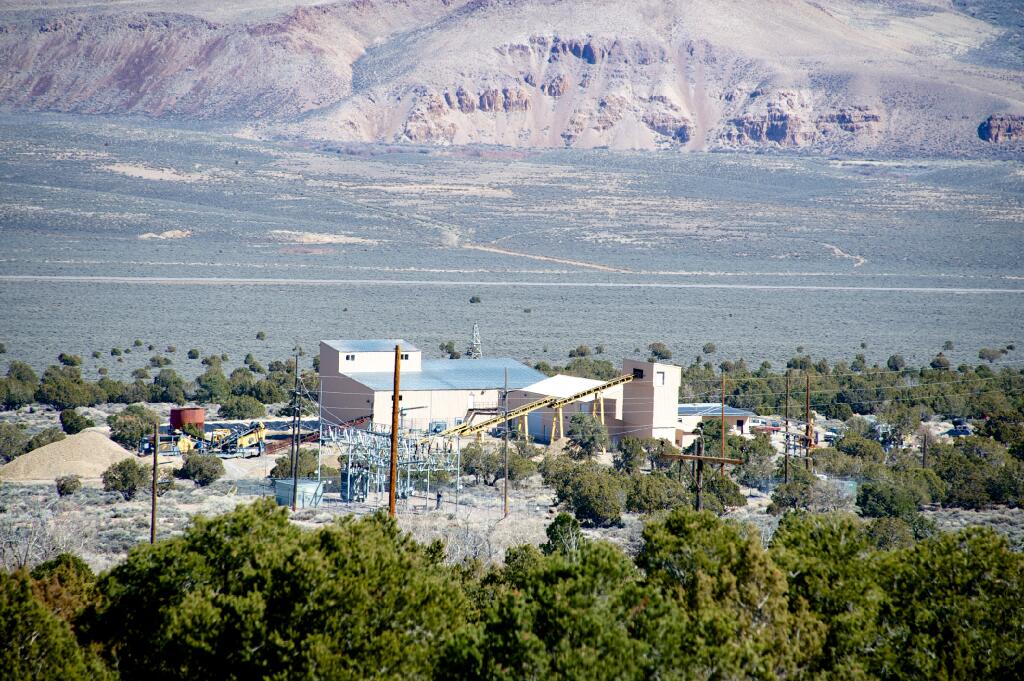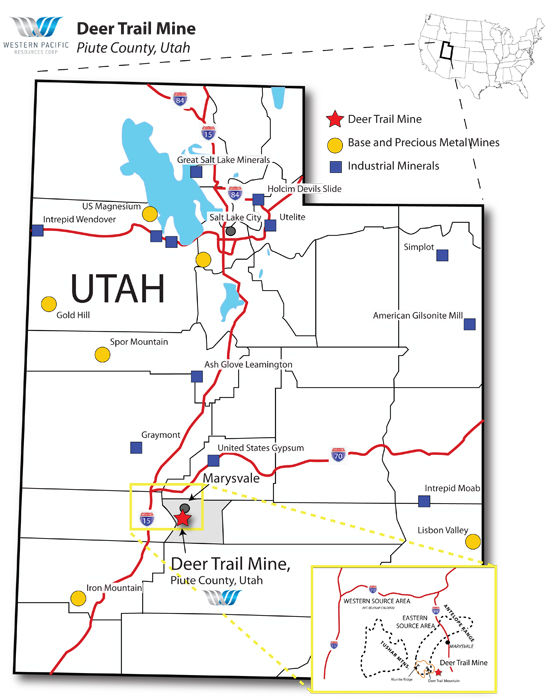The following commentary has been provided by Lawrence Roulston. Mr Roulston is an economic geologist and the editor of Resource Opportunities, a subscriber funded newsletter uncovering opportunities for wealth creation in natural resources stocks. We are subscribers of Mr. Roulston's and follow him at conferences. Sign up for a free report from Mr. Roulston today.
The Deer Trial Mine Is An Exceptional Opportunity for Western Pacific Resources
By Lawrence Roulston
Western Pacific (TSXV:WRP) is acquiring a past producing silver-gold mine in Utah which has a modern mill on-site and permits in place, allowing for the project to quickly advance to production as the company conducts further evaluation. In addition to the near-term production opportunity, the project has large-scale exploration potential.
The Deer Trail Mine produced high-grade silver and gold ore from 1878 to 1923 and again from 1964 to 1981. The mine was reactivated a decade ago with the construction of a new mill, flotation circuit and ancillary facilities. That operator did little in the way of exploration or mine planning and was consistently under financed. As a result, they ran out of money before they could optimize the operation, ramp up production and generate cash flow. The mine closed in 2008 and has been on care and maintenance since.
A recent tour with a former senior operating person, who has joined the Western Pacific team, and a day with exploration vice president Eric Saderholm provided tremendous insight into both the large-scale geological potential of the property and the excellent condition of the mill and the underground development, supporting a near-term restart of the operation. A summary of the tour is below.
Warwick Smith, CEO, worked for some time to acquire the Deer Trail mine, with the effort finally pushed to conclusion by the present market conditions. The deal involves a $7 million purchase price to be paid over 3 years.
The Deer Trail acquisition attracted two highly experienced new members to the Western Pacific management team. Michael Callahan, recently appointed president, was vice-president of Hecla before joining Silvermex in 2009, heading that company until its acquisition be a larger company. Arthur Brown, Western Pacific’s new chairman, was CEO and chairman of Hecla until his retirement.
Eric Saderholm, with a successful exploration record, will direct the geological program in support of restarting the mine and will also kick off a regional exploration program aimed at reviewing other past producers in the area as well as finding new ore bodies.
The history of Deer Trail began in 1878 when gold-silver values were discovered in outcrop. Initial mining followed the vein on the upper part of the mountain. A tunnel, intended to reach the orebody at a lower elevation, encountered a second ore zone (the 3400 Orebody). The 8600 zone was found in the search for a continuation of the orebody across a fault and is now believed to be a separate orebody.
The historic production was exceptionally high grade, with the cutoff ranging from 0.4 to 0.5 ounces gold per ton. Ore grades averaged 1.38 ounces per ton from the Upper Mine from 1918 to 1923. The Lower Mine and the 8600 area produced lower gold values (0.10 to 0.17 oz/ton), but silver grades to 15 ounces per ton. The ore also contains substantial base metal values, with zinc plus lead up to 17%.
The presently compiled historic resource (non-compliant) totals about 1.3 million tons hosting about 120,000 ounces of gold, 10 million ounces of silver and 200 million pounds of base metals. (Those figures have not been independently verified, should not be relied on and are presented merely as indicators of the potential of the project.)
The limited size of the resource is a function of the lack of exploration and has little bearing on the potential. There has never been a comprehensive geological review, much less a drilling program aimed at delineating resources. A couple of larger companies did brief programs looking primarily for large base metal deposits. The latest effort was intended to go quickly to production, with little effort devoted to exploration.
The present plan is to conduct a modest amount of drilling over the next few months to outline a resource and to assist in mine planning. Given the small amount of capital required to restart the mine (low millions), a modest resource would likely justify going ahead. The intent is that further exploration could be funded from operating cash flow.
The company will also conduct a comprehensive review of the existing mill, ancillary facilities and underground development to properly assess exactly what is required to support a re-start of the mining operation.
The Deer Trail mine is an exceptional opportunity which has both near-term production potential as well as larger-scale exploration potential. Results of an assessment of the Deer Trail mine, supporting the current impressions of the project, would support a substantially higher valuation for the company.
Price September 4, 2013: C$0.14
Shares Outstanding: 35,766,129
Market Cap: C$5.1 million
Contact: Investor Relations
604-692-2891
www.westernpacificresources.com
Report from the Deer Trail Mine
The Dear Trail Mine is just five miles from the historic mining town of Marysville in west-central Utah. Only a few remnants remain of the old town that once draped the hillside at the mine-site and had a population of up to 1600 people in the early 1900s.
The new surface facilities include a crusher and ball mill which feed a three-stage flotation circuit to produce a bulk concentrate. With a high precious metal content and low level of deleterious materials, the concentrate produced by this operation is saleable in spite of being a bulk concentrate (that is, multiple metals in the one concentrate). The size of the components and the layout support the 250 ton per day estimated capacity.

The shine is still on the bolts of the existing mill at the Deer Trail Mine (Click for more project photos).
A cyanide circuit is about 70% completed and could be finished in a short time at a modest capital cost. The cyanide circuit was intended to treat tailings from the historic mining operation, which grade about 0.8 g/t gold and 80 g/t silver, based on preliminary estimates of grade and tonnage. The tailings host an estimated 85,000 tons with over 360,000 ounces of Silver Equivalent or 7,800 ounces of Gold Equivalent, of which a portion could be recovered to generate substantial cash flow. Beyond the Deer Trail tailings, there are other tailings in the area which could also be processed, along with other oxide ore.
We walked underground for 3400 feet to the “3400 zone”, which was the original mining area and also provided ore to the recent operation. The mine is in good condition, timbered and bolted where required, but generally with competent walls and back. Some of the recent mining was conducted with inadequate planning, but the problem areas can be worked around.
Management is presently working toward a plan that would maximize recoveries from the previously mined areas. Mineralized zones visible in the open faces suggest that mining could be quickly resumed, but management has wisely elected to do some planning before breaking any more rocks. They will conduct underground drilling to better understand the remaining zones and then develop a comprehensive mining plan that will optimize the operation.
Bad air beyond the 3400 zone prevented us from proceeding further along the 10,000 foot long tunnel which also accesses the 8600 zone. Entry to that zone, hosting rich sulfide mineralization, will require a restart of the ventilation system.
Traveling to and from the property, and as we drove around on the property, it was clear that the district hosted numerous small mines. The district is hosted in an extensive volcanic field located at the contact between two important geological systems: the Colorado plateau and the basin-range provinces. The mineralizing systems, powered by the volcanic systems, created carbonate replacement deposits (CRD) within the limestone host rocks. A second deposit type is hosted within brecciated (broken) rock units in the sedimentary package.
The large extent of the volcanic system and the intensity and nature of the mineralization at Deer Trail strongly support the hypothesis that there are any number of other ore bodies waiting to be discovered. The district has never seen a comprehensive exploration program. The work now being planned by Western Pacific has great promise of finding further metal deposits. With an operating mill in the district, any such discoveries could be quickly developed.
The tour provided a great deal of comfort that there are no serious impediments to restarting the mining/milling operation at Deer Trail, subject to further evaluation and planning. It is also clear that there is good potential for further discoveries on the present property and throughout the district.
























